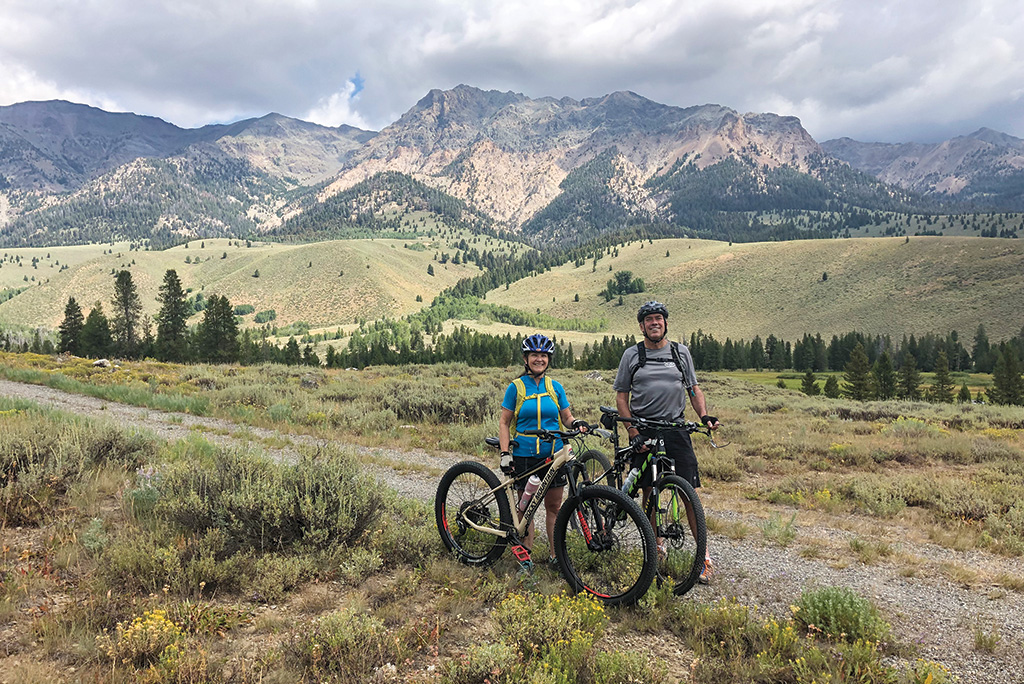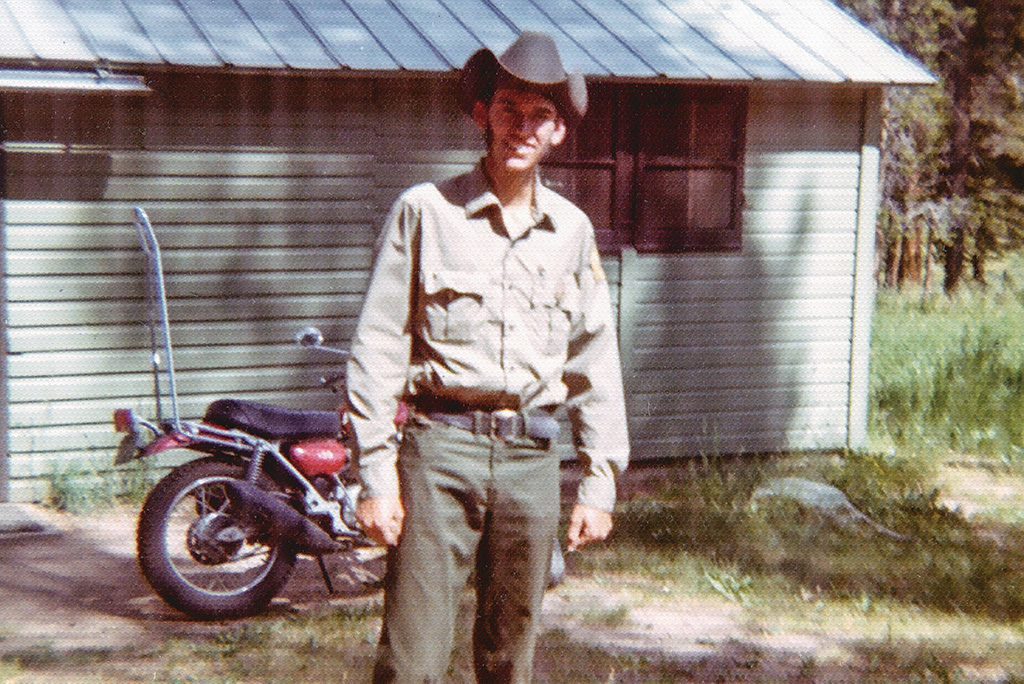A silviculturist once taught Paul Ries how to listen to the forest. “You can walk into the forest, and it’ll tell you how it’s doing. It’ll tell you its history and its future. And you can tell when they get old—just like people, they slow down and don’t grow as well. They’re more susceptible to attacks from bark beetles and wildfire.”
Ries walked through countless woods during his 42 years with the U.S. Forest Service. In 2014, he retired as Associate Deputy Chief in Washington, D.C., moving back to Hailey with his wife, Linda, an arborist and environmental educator with the Forest Service. But he has continued to work on behalf of the trees as a volunteer.

Ries on the Harriman Trail with his wife, Linda
In 2016, Ries led teams of specialists to Mongolia at the request of the U.S. State Department to help a country that is losing its forests. The State Department saw the mission as an opportunity to preserve the democracy of a country sandwiched between the former Soviet Union and China, says Ries. “It’s what the State Department calls ‘a democracy in a tough neighborhood,’” he adds. “Mongolia was part of the Soviet Union since the 1920s. In the 1980s, it was declared a democracy, but it took assassinations and decades to happen.”
The Trump Administration slashed funds for the project but the bipartisan nonprofit International Conservation Caucus Foundation sent Ries and his teams back in late 2019. They found a Gobi Desert that is spreading as the rangeland deteriorates due to a warming climate and overgrazing. Herders who had no reason to have big herds before now figure they can benefit economically under capitalism by having more livestock, Ries says.
Forests are being denuded by defoliating moths and forest fires that are bigger and more intense. In addition, Ries says, Mongolia’s great grass steppe is seeing droughts unlike it’s ever seen before. And since winters are warmer, any precipitation that falls is creating ice, hindering animals’ ability to forage even as their quality of cashmere declines. To combat the cold, Mongolians burn whatever they can find, including tires, coal, and plastic, leaving a sulfuric-smelling haze hanging over the capital city of Ulaanbaatar. People hike nearby trails in 50-below temperatures just to get out of the pollution. And those who moved to the cities because they can’t make it in the steppe anymore are sending their children back to live with grandparents because the air is so bad.
The COVID pandemic kept Ries at home for a couple of years. But he returned in April 2022 to teach Mongolians about preventative fire and biological controls and to educate Parliament members how to establish goals to mitigate overgrazing. “They don’t know how to reforest—to collect seeds, to have nurseries, to plant trees,” says Ries. “We hope we can teach them to have well-managed forests so they can produce wood to burn instead of having to burn tires.”
Ries was introduced to the woods by his grandparents—hippies who lived in a 20-by-20-foot cabin near Yosemite National Park. It was there that he met a Forest Service ranger who told him how much he loved his job. Ries went on to study forestry at Colorado State in Fort Collins, meeting his wife of 47 years while there.
Ries headed up the Sawtooth National Recration Area (SNRA) from 1993 to 1999. It was a time when debates about overgrazing—not forests—predominated, says Linda Ries. But Ries managed to work on behalf of the woods by establishing partnerships. He enlisted the help of the late Senator Frank Church’s widow Bethine in establishing the Sawtooth Society to help mitigate the decline in funding and staffing for the SNRA. And he worked with the Blaine County Recreation District and Pamela Harriman to build the year-round Harriman Trail.
Ries laments that he now sees some of the problems Mongolia is experiencing, such as trees sickened by insect infestation and drought, outside the door of his cabin near Easley Hot Springs. “If you have periodic fires, fires are cooler and they don’t kill a lot of trees,” he says. “Instead, they create openings for trees to succeed. The 2013 Beaver Creek Fire burned hot because fuel had built up.” Clear cuts surrounding Galena Lodge have left the forests there “pretty healthy,” Ries says. And the removal of unhealthy trees on Bald Mountain is improving the forest health of Sun Valley’s ski resort.
Ries said he can’t recall temperatures ever getting to 90 here during the 1990s. No one felt the need for air conditioning, afternoon thunderstorms were common, and consistent snow was a given. “I always thought climate change was something our kids might deal with. I never thought I would be dealing with it,” he says.
Ries is buoyed that power plants are converting to natural gas, that wind and solar power is taking the place of coal plants and that the Idaho National Labratory is working on smart power and better batteries for electric vehicles. “I do think renewable energy is the future,” he says. “But we’re not moving fast enough.”


